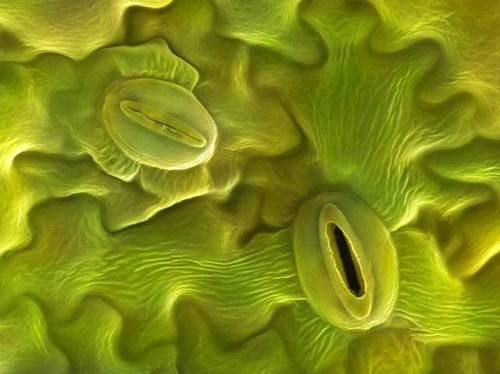Rocks-everywhere - Science, Plants, Cats, Music, And More

More Posts from Rocks-everywhere and Others

Summer Dreaming

At this time of year, the sight of some battered bird-built structures can trigger summer dreams. Consider the Baltimore Oriole nest dangling from a linden branch above a Flagstaff Hill sidewalk in Pittsburgh’s Schenley Park. Watch the bundle of plant fiber and ribbon scraps sway in a cold late winter wind and you might be able to imagine the nest partially concealed by bright green leaves and periodically visited by a bird with goldfish-orange feathers.

Baltimore Oriole pair in CMNH Bird Hall with nest and nest cross-section.
Such out of season thoughts are far from original. One hundred and sixty-one years ago, and some 500 miles northeast of Pittsburgh, naturalist Henry David Thoreau used a different common name for the species when he referenced the bright and melodic warm season residents in a winter journal entry.
What a reminiscence of summer, a fiery hangbird’s nest dangling from an elm over the road when perhaps the thermometer is down to -20, and the traveler goes beating his arms beneath it! It is hard to recall the strain of that bird then.
Henry David Thoreau – journal entry December 22, 1859
Patrick McShea works in the Education and Visitor Experience department of Carnegie Museum of Natural History. Museum employees are encouraged to blog about their unique experiences and knowledge gained from working at the museum.
Peering back in time over 420 million years ago into the Silurian Period when the first land plants emerged. Pictured in the foreground are Baragwanathia and Zosterophyllum with their pinkish coloured sporangia for dispersing spores. More to come soon from this project with biologist and fellow fossil plant enthusiast Ken Kwak.











Bryce Canyon was just a little chilly. Mossy Cave had truly blue icicles. And I loved these snow curls. I watched the far left one form.

Stomata as a Proxy for Atmospheric CO2 Levels
These strange, mouth-like structures are called stomata. Stomata are specialized pore structures found on plant leaves that permit the exchange of gases such as CO2, O2 and H2O, between the inside and outside of the leaf. They do so through the opening and closing of stomatal guard cells.
Plants convert visible light into sugars via the process of photosynthesis, which uses CO2 as a reactant. Along with light availability and temperature, CO2 is a limiting reactant of photosynthesis which means that the quantity of this compound controls the number of reactions that can take place.
Keep reading





Blue tit/blåmes.
What if... what if I WANT an info dump???
Then you're my favorite and I will dump SO much info on natrocarbonatite lava
No one knows for sure why or how this type of lava forms. Oldoinyo Lengai is the only volcano on earth that actively erupts it currently, and Oldoinyo Lengai hasn't been extensively studied.
The factor that causes lava to be viscous (thick, and sticky) is its silica content. Rhyolitic magmas, like those in Washington, have around 70 weight % silica. Basaltic magmas, like the volcanoes in Hawai'i, are around 45 wt% silica. Natrocarbonatite lava is less than 3% silica. Its flow rate is close to water, so it flows faster than you can outrun.
It's also a LOT less hot than other lavas. Most lavas are from 700-1200 degrees C (basaltic lavas in the higher range, rhyolitic lavas in the lower), but natrocarbonatite is around 500-600 degrees C. It's cool enough that you won't immediately die if you fall into it (you'll be hospitalized for months, as one man who fell into it was, but it's survivable). It's so cool that you can't see it glow in daylight.

It flows black and cools white! This is because of its content of the minerals nyerereite and gregoryite, which are unstable and break down quickly when exposed to humidity.
Basically it's cool as fuck literally and figuratively and I'm obsessed with it






yall we went to the most beautiful lake spring today. LOOK at this water 😭
-
 aede-a reblogged this · 2 weeks ago
aede-a reblogged this · 2 weeks ago -
 drugaritza reblogged this · 2 weeks ago
drugaritza reblogged this · 2 weeks ago -
 drugaritza liked this · 2 weeks ago
drugaritza liked this · 2 weeks ago -
 imageness-retro reblogged this · 2 weeks ago
imageness-retro reblogged this · 2 weeks ago -
 autisticsocialist liked this · 3 weeks ago
autisticsocialist liked this · 3 weeks ago -
 owners-puppy liked this · 4 weeks ago
owners-puppy liked this · 4 weeks ago -
 prettykittendesires reblogged this · 4 weeks ago
prettykittendesires reblogged this · 4 weeks ago -
 knightconvoy liked this · 1 month ago
knightconvoy liked this · 1 month ago -
 xx-lilly-of-the-valley-xx liked this · 1 month ago
xx-lilly-of-the-valley-xx liked this · 1 month ago -
 thecrazycatman reblogged this · 1 month ago
thecrazycatman reblogged this · 1 month ago -
 thecrazycatman liked this · 1 month ago
thecrazycatman liked this · 1 month ago -
 ice-truck-killer liked this · 1 month ago
ice-truck-killer liked this · 1 month ago -
 nocturnal-desolation reblogged this · 1 month ago
nocturnal-desolation reblogged this · 1 month ago -
 nocturnal-desolation liked this · 1 month ago
nocturnal-desolation liked this · 1 month ago -
 awfulmessivemade reblogged this · 2 months ago
awfulmessivemade reblogged this · 2 months ago -
 thickynicky547 liked this · 2 months ago
thickynicky547 liked this · 2 months ago -
 xxx23-10xxx liked this · 2 months ago
xxx23-10xxx liked this · 2 months ago -
 blgl4thedl liked this · 2 months ago
blgl4thedl liked this · 2 months ago -
 punkrockragdoll reblogged this · 2 months ago
punkrockragdoll reblogged this · 2 months ago -
 stillchasingwaterfalls liked this · 3 months ago
stillchasingwaterfalls liked this · 3 months ago -
 octobersmut liked this · 3 months ago
octobersmut liked this · 3 months ago -
 moondee reblogged this · 3 months ago
moondee reblogged this · 3 months ago -
 moondee liked this · 3 months ago
moondee liked this · 3 months ago -
 krissymoll reblogged this · 3 months ago
krissymoll reblogged this · 3 months ago -
 heroineandoldlace reblogged this · 3 months ago
heroineandoldlace reblogged this · 3 months ago -
 heroineandoldlace liked this · 3 months ago
heroineandoldlace liked this · 3 months ago -
 nerwio liked this · 3 months ago
nerwio liked this · 3 months ago -
 boynumdayaralar liked this · 3 months ago
boynumdayaralar liked this · 3 months ago -
 endlessmockery reblogged this · 3 months ago
endlessmockery reblogged this · 3 months ago -
 dannnaa5 reblogged this · 3 months ago
dannnaa5 reblogged this · 3 months ago -
 celesteablack liked this · 3 months ago
celesteablack liked this · 3 months ago -
 transiently-translucent liked this · 3 months ago
transiently-translucent liked this · 3 months ago -
 good-in-space liked this · 3 months ago
good-in-space liked this · 3 months ago -
 crookpit liked this · 3 months ago
crookpit liked this · 3 months ago -
 baranorimo liked this · 3 months ago
baranorimo liked this · 3 months ago -
 nigittarius reblogged this · 3 months ago
nigittarius reblogged this · 3 months ago -
 nigittarius liked this · 3 months ago
nigittarius liked this · 3 months ago -
 broadwayandtvshowsallthetime liked this · 3 months ago
broadwayandtvshowsallthetime liked this · 3 months ago -
 artsy-biggirl liked this · 3 months ago
artsy-biggirl liked this · 3 months ago -
 bloodyexist liked this · 3 months ago
bloodyexist liked this · 3 months ago -
 darling-stevie reblogged this · 3 months ago
darling-stevie reblogged this · 3 months ago -
 darling-stevie liked this · 3 months ago
darling-stevie liked this · 3 months ago -
 paytakyilan liked this · 3 months ago
paytakyilan liked this · 3 months ago -
 c0l0urmexnkxndness reblogged this · 3 months ago
c0l0urmexnkxndness reblogged this · 3 months ago
225 posts
